More About Garbage
People who know me -- and some regular readers -- will know I am kind of obsessed with garbage. Mostly, with how much of it we make, and how we just sort of forget what happens to it when it leaves the curb in front of our house.
So when a colleague arranged a tour of Waste Management's Davis Street Transfer Station for this afternoon, I leapt at the chance to go along. (By the way, they offer tours of the facility for interested parties in trash-related fields -- like people who design buildings or build them -- on demand.)
The big news to me was that Waste Management always sorts debris boxes. So our regular dumpster-loads are sorted -- partially by hand, partially by machine -- and about 76% of their contents are recycled rather than landfilled. That is very reassuring.
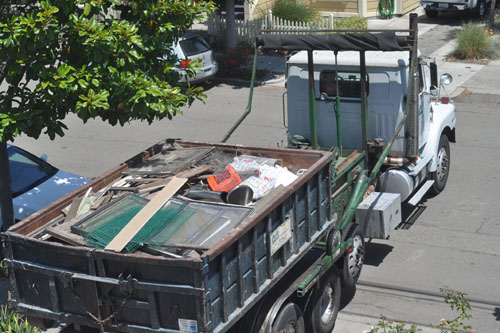
That means that 76% of our last dumpster-load -- seen here exiting the driveway a few weeks ago -- actually ended up somewhere other than the landfill. Well, actually, not this particular dumpster-load, because we generally only put things in a dumpster if they can't be recycled, but on average.
Anyway let's start with household waste.
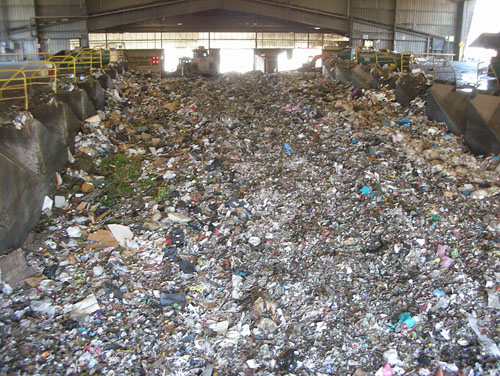
This is an enormous room full of trash. You may recall seeing the outside of this building in my December post about the landfill. That is a 17 foot deep pit that is 350 feet long and I forget how many feet wide but it's very very big. When you throw something away, it gets dumped there.
Apparently people often call the transfer station because they've thrown away something truly valuable ($50,000 worth of jewelry in one case), but once it has been dumped in here it's effectively gone. Nothing that comes into this room gets sorted.
This video shows a garbage truck dumping its load into the pit. The pit accepts 2800 tons (TONS) of trash every day. Yes, every DAY.
Not shown (because we didn't visit it) is the recycling sorting center. While trash is never sorted, all recycling that comes through here is hand-sorted, and here's a public service message: don't put needles in the recycling, not even inside of a glass bottle. The most common injury on the site is needle-sticks in the recycling sorting line. If you have a friend or relative who uses needles, make sure they put them in a sharps box and dispose of them properly.
Now on to the commercial waste part of the facility.
The materials come in here in the debris boxes:
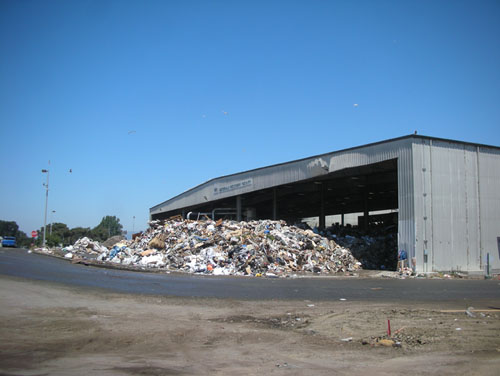
In addition to the debris boxes (the same dumpsters that we order for our house), the regular trash stream from a selected category of businesses is diverted here to be sorted, because those businesses tend to have low recycling compliance.
Here's a little sample of what is in the big pile: a little side-pile of inert materials to be ground up and used as the base for roads.
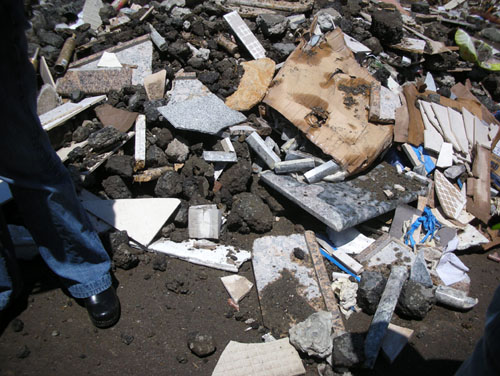
Yes, check out those expensive slabs of stone. I wonder how long they were actually used before somebody decided they were dated and needed replacing.
Much of the sorting in the MRF (Materials Recovery Facility) is automated, but there's a very short human sorting line at the beginning of the process. These people pull out pieces of wood, paper, and metal that are easy to grab as the stuff goes by.
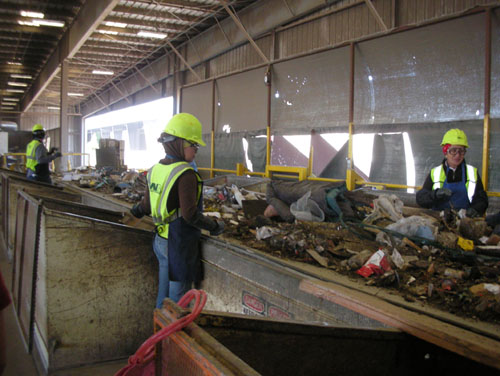
This first sorting pulls out all kinds of stuff. This is one of the metals bins:
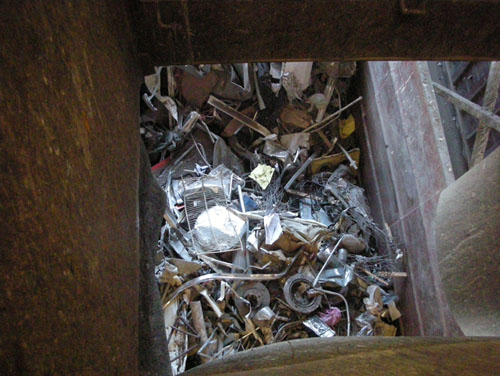
Small, inert materials are sorted out by the machines and dumped in a pile. This is used at the landfill to cover the day's deposits to keep trash from blowing out and birds from getting into the trash. This doesn't count as recycled, because it ends up in the landfill.
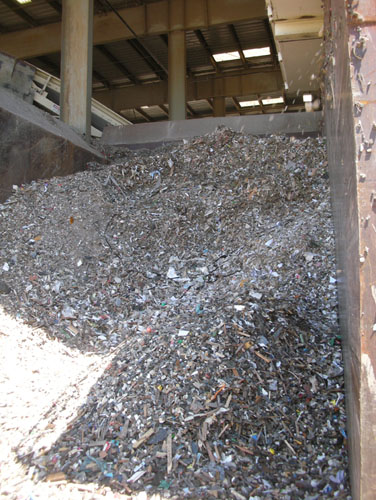
All along the sorting line in the MRF you see piles of sorted materials, ready to move on.
The wood, for example, ends up here, in a big pile:
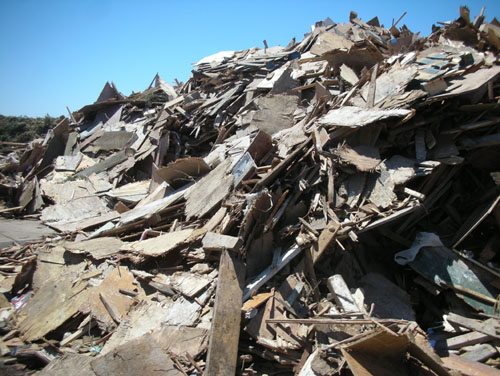
It's then ground up, and they pass a magnet over the ground-up material to remove the nails to sell for scrap separately.
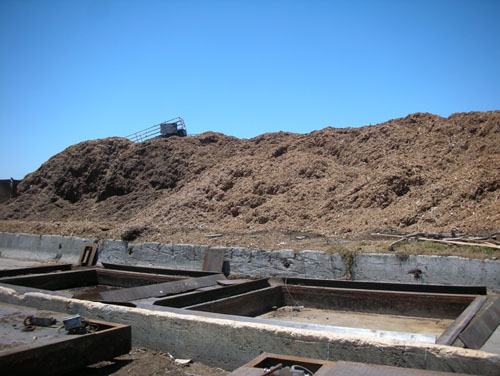
The ground up wood is taken off-site to be composted or used for other shredded-wood applications. And yes, there is engineered wood with random and possibly toxic adhesives mixed in with good wood.
And here are some videos of the trash sorting. There's a much larger automated material handling line than just this bit, but I was particularly taken by this part, where small pieces that have been shaken out of the stream are then run over with a magnet to remove ferrous metals.
(No small part of why I only have two videos from this building is that the light in the building is not optimized for shooting video with a little handheld camera. I have lots of other video that is some indistinct dark shapes making huge amounts of noise against a bright background.)
It was a very informative trip. Plus they gave me this:
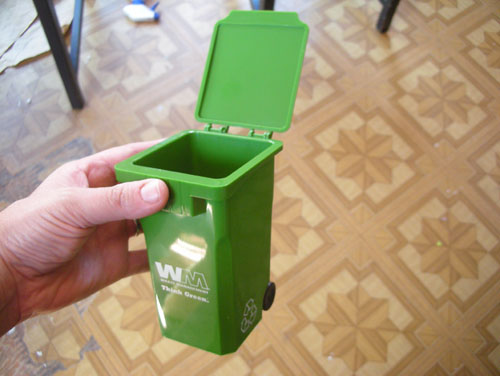
posted by ayse on 07/23/10